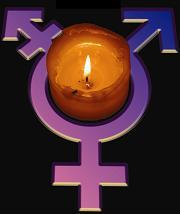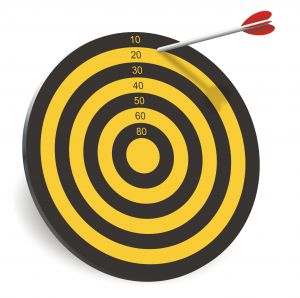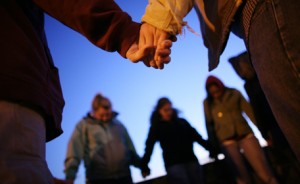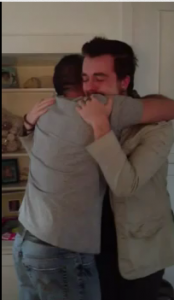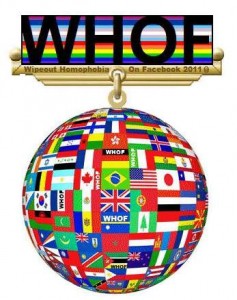 Shared by: Wipe Out Homophobia
Shared by: Wipe Out Homophobia
Transgender Day of Remembrance is a day to memorialize those who died due to anti-transgender prejudice.
Although not everyone honored self-identified as trans, each was a target of violence based on bias against trans people.
The deaths of those based on anti-transgender prejudice are largely ignored. Over the last decade, more than one person per month has died due to transgender-based prejudice. This trend shows no sign of abating.
The Transgender Day of Remembrance serves several purposes. It raises public awareness of hate crimes against trans people, publicly mourns and honors the lives of many who might otherwise be forgotten and gives us all a chance to step forward and stand in vigil, memorializing those who have died through anti-transgender violence.
Link to —> Transgender Pride Facebook Page.
What is Transgender?
The term “transgender” means different things to different people, which can make it rather hard to define:
“Transgender,” at its most basic level, is a word that applies to someone who doesn’t fit within society’s standards of how a woman or a man is supposed to look or act.
For example, “transgender” may be used to describe someone who was assigned female at birth but later realises that label doesn’t accurately reflect who they feel they are inside. This person may now live life as a man, or may feel that their gender identity can’t be truly summed up by either of the two options we’re usually given (male or female). They might feel like they’re in between those two options; both male and female; or outside the two-gender system, entirely, neither male nor female.
“Transgender” can also be used as an umbrella term, meaning it groups together a variety of people with different identities. The common link is that people under the “transgender umbrella” don’t really fit within their society’s standards of how women and men are supposed to look and act (in other words, they’re “gender non-conforming”).
Other important things to keep in mind:
“Transgender” is a relatively new word — it’s only been around for a few decades — but it’s not a new concept. Gender non-conforming people have existed in many time periods and cultures.
A transgender identity is not dependent upon medical procedures. In other words, some transgender people have surgeries or take hormones to bring their body into alignment with their gender identity, BUT many do not medically alter their bodies, and that doesn’t mean they’re not transgender.
You might think someone is transgender, but this is a personal identity that some people claim and others do not. Wait to see how someone self-identifies (or ask, respectfully) before assuming.
What is Transphobia?
Definition: Transphobia is the fear, hatred or dislike of, or discrimination towards, a person because that person is transgender. This is sometimes referred to as transprejudice and the consequences can be very serious. Transphobia is similar to homophobia which is prejudice against someone who is gay, lesbian or bisexual.
As with many fears, transphobia can be based on ignorance and irrationality. The discrimination and harassment that follows can be accidental or deliberate, subtle or obvious.
As with many forms of discrimination and harassment, trans-phobia can hurt the targets of prejudice as well as the perpetrators and members of the dominant group.
Trans-phobia can:
Lock all people into rigid gender roles inhibiting creativity and self-expression
Limit all peoples’ ability to communicate positively with others and form close relationships
Lead to important facts, concepts and personal stories being hidden from the curriculum
Lead to the inhibition of other types of diversity by promoting a message there is only one way to be.
Trans-phobia and prejudice against trans people are sadly all too common in our society and trans people often meet with discrimination and prejudice when they trying to get on with their lives and perform everyday activities.
As with all other prejudices, trans-phobia is based on misconceptions and negative stereotypes about a group of people (in this case the trans community or those who are perceived to be trans) that are used to “justify” discrimination, harassment and even hate crimes.
The following are a few examples of trans-phobic attitudes:
The belief that trans women are not “real women”
The belief that trans men are not “real” men
The belief that non-binary genders are invalid
The belief that transsexual people are gay people in denial and wish to have sex reassignment surgery to attempt to restore ‘hetero-normativity’
The refusal to acknowledge a trans person’s true gender
Refusal to use the correct name for a trans person
Repeated and deliberate mis-gendering of trans people
Exclusion of trans people from activities, services or conversations.
In some cases, transphobic incidents can be very extreme, such as the murders of trans women Andrea Waddell and Destiny Lauren in 2009 …
(http://www.birdofparadox.net/blog/?cat=80, http://www.thefword.org.uk/blog/2010/08/destiny_lauren)
The Transgender Day of Remembrance,

